Linking Danube - POLE 6: Sustainable mobility-Newsletter 1
19-12-2017

THEMATIC POLE OF SUSTAINABLE TRANSPORT SOLUTIONS AND MOBILITY

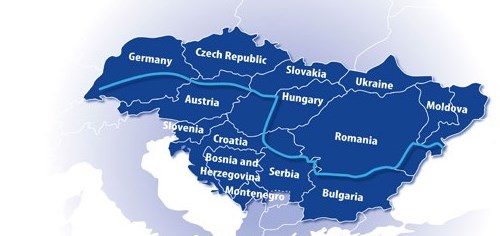
Managing mobility of people and goods in a sustainable way is becoming one of the most pressing challenges of today. Mobility can no longer be defined outside the environmental, social and climate impact context. Therefore, for the sake of our common future, sustainable mobility has to be properly integrated into the emerging strategies and concretely put into practice.
The Danube Transnational Programme is currently financing six projects related in various ways to sustainable mobility and transport solutions. In order to make the best use of their results, they were pooled together under the umbrella of one Thematic Pole – “Sustainable transport solutions and mobility” within the capitalisation strategy initiated by the Programme.
The Thematic Pole provides the projects the possibility to identify synergies and promote complementary solutions to the problems the Danube region is presently facing. The projects as advocates of sustainable mobility must avoid fragmented approach and speak with one voice, thus being able to efficiently influence regional policies and processes. Greater coherence of actions undertaken by the projects in the framework of the Danube programme is needed in order to facilitate a harmonised and well-coordinated development that would eliminate current disparities.
Ana Leganel, project officer
PROJECT CHESTNUT – COMPREHENSIVE ELABORATION OF STRATEGIC PLANS FOR SUSTAINABLE URBAN TRANSPORT
 During the first period majority of activities was dedicated to establishment of project management structure on the project level as well as on the partner levels. Kick-off meeting was organized and implemented in February in Portorož (Slovenia). Kick-off meeting included transnational conference, where project CHESTNUT was presented and put in the context of importance of Sustainable Urban Mobility Planning, based on experiences in countries with longer history of sustainable mobility planning and deriving tangible and intangible results - the case of City of Vienna.
During the first period majority of activities was dedicated to establishment of project management structure on the project level as well as on the partner levels. Kick-off meeting was organized and implemented in February in Portorož (Slovenia). Kick-off meeting included transnational conference, where project CHESTNUT was presented and put in the context of importance of Sustainable Urban Mobility Planning, based on experiences in countries with longer history of sustainable mobility planning and deriving tangible and intangible results - the case of City of Vienna.
In the framework Mobility scenarios, MOV actively cooperated with other partners by preparation of data collection template in terms of organizing and moderating online meetings where partners actively discussed the data collection template composition. Internal review and evaluation of data collection on Velenje FUA level was implemented and given to analysis through external expert support. The result of these activities was the dliverable transnational data collection template. In the framework a meeting on the level of traffic and infrastructure planners of Velenje FUA was implemented, where the project CHESTNUT was presented in detail and unofficial working group was established with the aim of efficient communication on the Velenje FUA level and analysis of traffic and transport situation in 9 other municipalities of Savinjsko – Šaleška subregion, which forms the Velenje FUA.
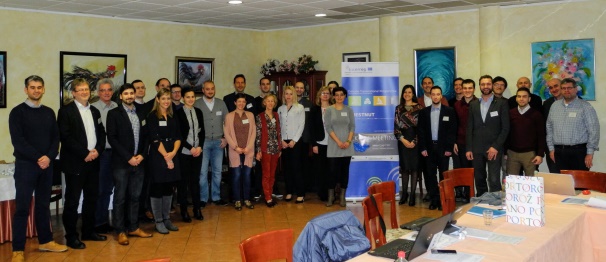
A first Study visit - promoting the e-cycling as the most efficient and sustainable mobility mode, was implemented in the framework of 1st transnational meeting in Weiz in May 2017.

Project was also promoted through cooperation in Pole 6 Capitalization strategy, where MO Velenje actively cooperated. It was presented by LP manager on the kick-off meeting of LinkingDanube project in March 2017 in the framework of Capitalization strategy implementation.
Contact / Lead Partner:
Patricija Halilović, Municipality of Velenje; E:patricija.halilovic@velenje.si
dtp.interreg-danube.eu/chestnut
PROJECT CITYWALK – TOWARDS ENERGY RESPONSIBLE PLACES: ESTABLISHING WALKABLE CITIES IN THE DANUBE REGION
17 partners from Austria, Bulgaria, Croatia, Czech Republic, Hungary, Romania, Serbia, Slovakia, and Slovenia are working on the CityWalk project. CityWalk helps cities in the Danube Region to reduce emissions, noise and to become safer, better places to live, by increasing the role of more sustainable forms of mobility in the urban transport mix, especially active transport forms – like walking and biking. To do so the main focus of project is to improve the key conditions of walkability.
Increasing greenhouse gas emissions and congestions are negative side effects of urbanization, resulting from inefficient and unsustainable local transport systems. A key challenge in cities is to improve transport systems and accessibility in an environmentally-friendly manner. CityWalk project will result in improved urban mobility - while reducing emissions, noise levels and congestions, increasing safety and making cities more liveable places (and also contributing to a healthier population).
Although the emphasis is on walking, t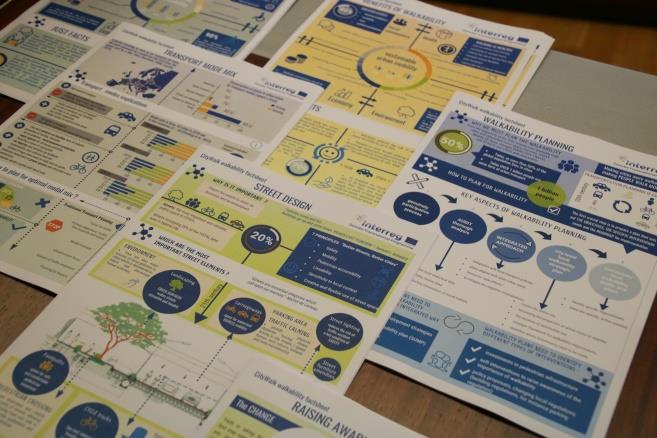 he proposed project addresses the challenge with a holistic approach – improving urban mobility through efficiently combining various means of transport. The CityWalk project helps cities in the Danube Region to identify the obstacles and to develop a plan to address those obstacles by developing the appropriate toolkit (walkability guide), designing walkability plans, delivering 8 pilot actions, and presenting new policy proposals.
he proposed project addresses the challenge with a holistic approach – improving urban mobility through efficiently combining various means of transport. The CityWalk project helps cities in the Danube Region to identify the obstacles and to develop a plan to address those obstacles by developing the appropriate toolkit (walkability guide), designing walkability plans, delivering 8 pilot actions, and presenting new policy proposals.
Contact / Lead Partner:
Danilo Čeh, ZRC Bistra Ptuj, E: danilo.ceh@bistra.si
dtp.interreg-danube.eu/citywalk
PROJECT EGUTS – ELECTRIC, ELECTRONIC AND GREEN URBAN TRANSPORT SYSTEMS
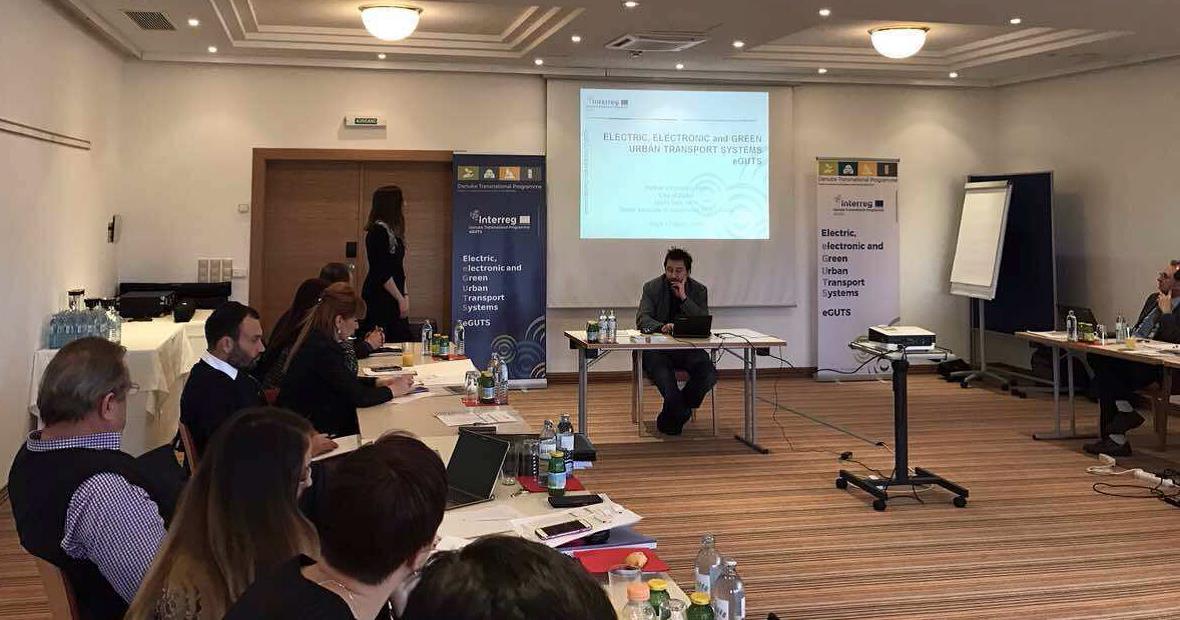 The purpose of the eGUTS project is to exploit potentials of e-mobility in 8 Danube cities, regions and beyond. Starting from a set of Feasibility Studies, the project partners will elaborate and realize Local Action Plans to promote the e-mobility. 22 partners are involved in the project and will develop innovative eGUTS Standards for cities supporting e-mobility. The project Lead Partner is Politehnica University Timisoara.
The purpose of the eGUTS project is to exploit potentials of e-mobility in 8 Danube cities, regions and beyond. Starting from a set of Feasibility Studies, the project partners will elaborate and realize Local Action Plans to promote the e-mobility. 22 partners are involved in the project and will develop innovative eGUTS Standards for cities supporting e-mobility. The project Lead Partner is Politehnica University Timisoara.
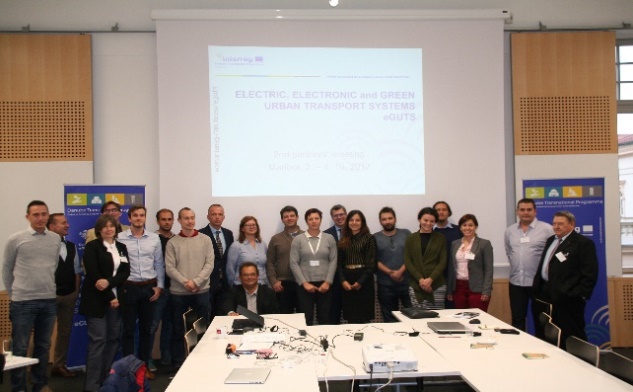
During the 1st period of the project the partners delivered 5 transnational Feasibility Studies on eMobility, established the eGUTS Transnational Expert Panel consisting of nine members to evaluate Feasibility Studies, started to develop conception and setup of the eGUTS forum and IT-Platform for the e-mobility application, and stated on the preparation of the pilot action implementation.
In February 2018 the next project partner meeting will take place in Bratislava (Slovakia) where the first year review of the project will be done.
Contact / Lead Partner:
Prof. Dr. Eng. Constantin-Dan Dumitrescu, Politehnica University of Timisoara
PROJECT LINKING DANUBE - LINKING TRANSNATIONAL, MULTIMODAL TRAVELLER INFORMATION AND JOURNEY PLANNERS FOR ENVIRONMENTALLY-FRIENDLY MOBILITY IN THE DANUBE REGION
There is a huge cross-border travel deman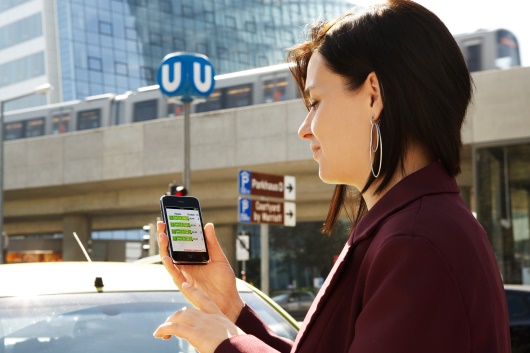 d within the EU by both tourists and cross-border commuters, leading to hundreds of millions of cross-border trips every year. The accompanying end user demand for traveller information notwithstanding, most EU traveller information services provide unsatisfactory results when it comes to cross-border travelling and thus fail to tap the full potential of multimodal mobility solutions.
d within the EU by both tourists and cross-border commuters, leading to hundreds of millions of cross-border trips every year. The accompanying end user demand for traveller information notwithstanding, most EU traveller information services provide unsatisfactory results when it comes to cross-border travelling and thus fail to tap the full potential of multimodal mobility solutions.
In line with European visions of decarbonising transport and increasing its efficiency as well as creating a Single European Traveller Information System, the project LinkingDanube focusses on creating a seamless end user experience when travelling across borders. With services from Austria, Czech Republic, Hungary, Romania, Slovakia and Slovenia participating, the project creates a consistent piloting area along the Danube River with set of defined use cases to be demonstrated. In order to ensure a most sustainable approach, LinkingDanube takes the step forward from mere data exchange to linking existing traveller information services via common OpenAPI.
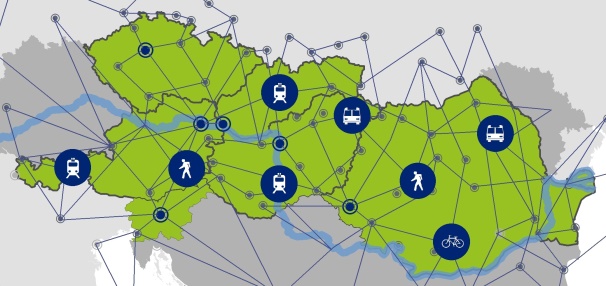
Recent project activities have included a through state-of-the-art analysis to determine the present capabilities of each local journey planner and mapping against the contents and requirements of the CEN/TC 278 OpenAPI standard. Based on this, central-distributed system architecture has been designed for LinkingDanube.
The current work focuses on finishing the minimum content specification as well as lining out basic functional requirements that capture the intended functions and tasks of the central-distributed journey planning system.
Next steps will include the finalisation of the LinkingDanube concept for transnational journey planning, a public document presenting all conceptual work of LinkingDanube for adoption and further use by stakeholders intending to implement the concept of linking services, as well as developing the central node and adapting the local journey planners.
Contact / Lead Partner:
Bettina Neuhäuser, AustriaTech Federal Agency for Technological Measures Ltd.
E: bettina.neuhaeuser@austriatech.at
dtp.interreg-danube.eu/linking-danube
PROJECT TRANSDANUBE.PEARLS – NETWORK FOR SUSTAINABLE MOBILITY ALONG THE DANUBE
 The project Transdanube.Pearls was officially launched during the Kick-Off conference in Belgrade on 1st March 2017. The central element of the project is the development of a network of destinations (“Pearls”) committed to sustainable mobility in tourism along the Danube. The project aims at developing socially fair, economically viable, and environmentally friendly and health promoting mobility services for the visitors of the Danube region.
The project Transdanube.Pearls was officially launched during the Kick-Off conference in Belgrade on 1st March 2017. The central element of the project is the development of a network of destinations (“Pearls”) committed to sustainable mobility in tourism along the Danube. The project aims at developing socially fair, economically viable, and environmentally friendly and health promoting mobility services for the visitors of the Danube region.
In summer 2017, international experts from the mobility and tourism sector travelled along the Danube for 22 days using only sustainable means of transport. The tour provided valuable input about possibilities to travel the Danube region without private car. During the partner meeting in Ruse in October 2017, the partners achieved an important project milestone by approving the final version of the common standards. These standards define basic criteria and minimum requirements to be fulfilled by future Pearls and members of the network such as the guarantee to travel sustainably to, from and within the Pearls.
Besides, 30 partners and stakeholders from the mobility and tourism sector participated in a transnational training in Silistra, Bulgaria for becoming a certified sustainable mobility manager. The trained mobility managers will adapt the training material to country-specific framework conditions and carry out regional trainings in order to transmit their acquired knowledge to stakeholders on the regional level.
Contact / Lead Partner:
Agnes Kurzweil, Environment Agency Austria, E: agnes.kurzweil@umweltbundesamt.at
dtp.interreg-danube.eu/transdanube-pearls
PROJECT TRANSGREEN - INTEGRATED TRANSPORT AND GREEN INFRASTRUCTURE PLANNING IN THE DANUBE-CARPATHIAN REGION FOR THE BENEFIT OF PEOPLE AND NATURE
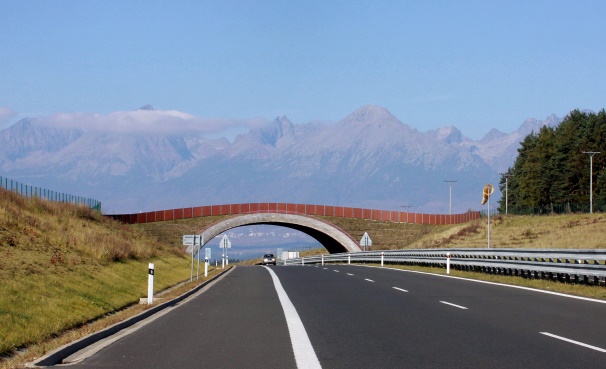
TRANSGREEN means a better connected Carpathian region with transport infrastructure that takes nature into account. The project aims to contribute to safer and environmentally-friendly road and rail networks that are being developed in the Czech Republic, Hungary, Romania, Slovakia, and Ukraine, with a focus on 4 pilot areas along the TEN-T network.
During the first project year (2017), the project consortium focused on building international and national awareness on the project and bringing together representatives of complementary fields, relevant for integrated transport planning: nature conservation (authorities and NGOs), transport (developers and researchers) and spatial planning. A total of 127 organizations participated in project meetings, and have shown a high degree of interest in connectivity of people and wildlife.
Although planning and policy work are long-term processes, the above-mentioned meetings already have concrete outcomes. In Czech Republic, project partners are part of a cross-sectoral cross-border Czech-Slovak working group of Nature Conservation led by the Ministry of the Environment, on the topic of green infrastructure. In Romania, a similar working group is in place. In Ukraine, comments for the National Transport Strategy 2030 were submitted.
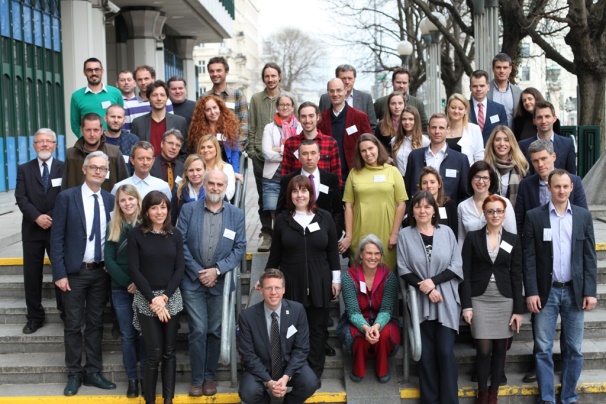 One step in establishing integrated planning procedures has been completed – the Scheme for Stakeholder Participation Processes. The project team is working in the field on identifying ecological corridors in the pilot areas and collecting data for future publications.
One step in establishing integrated planning procedures has been completed – the Scheme for Stakeholder Participation Processes. The project team is working in the field on identifying ecological corridors in the pilot areas and collecting data for future publications.
Contact / Lead Partner:
Hildegard Meyer, WWF International Danube-Carpathian Programme, E: hmeyer@wwfdcp.org
dtp.interreg-danube.eu/transgreen
Managing Authority | Joint Secretariat
Honvéd utca 13-15 – 1055 Budapest, Hungary
E-mail: danube@dtp.interreg-danube.eu ; Web: dtp.interreg-danube.eu
